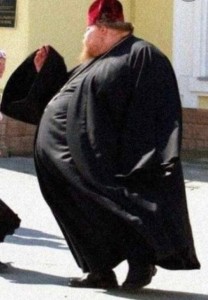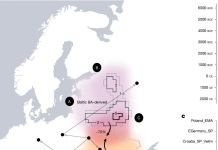Harvard Professor Richard Pipes stated in his ‘Russia Under the Old Regime‘: “The Golden Age of the Orthodox Church in Russia coincided with Mongol domination. The Mongols exempted all the clergy living under their rule from the burdens which they imposed on the rest of the subjugated population. The Great Iasa, a charter issued by Genghis Khan, granted the Orthodox church protection and exemption from tribute and taxes in return for the pledge to pray for the khan and his family. The privilege was an immense boon to the church at a time when the rest of Russia suffered from heavy exactions and violence, and its wealth grew by leaps and bounds. The main beneficiaries of Mongol favour were the monasteries. In the fourteenth century, Russian monks undertook vigorous colonization, and before it was over, built as many new abbeys as had been established since the country’s conversion four hundred years ealier. Around 1550, there were in Russia some two hundred monasteries, some of immense size, among them the St Sergius Monastery of the Trinity, the Beloozero Monastery of St Cyril, and the Solovetskii Monastery…
… under Mongol rule the church and the monasteries enjoyed exemption from the tribute and all the other obligations imposed on the Russian populace. This valuable privilege was granted by charters which every new khan had to reconfirm on his accession. To preserve its advantages, the church obviously required effective representation at Sarai. In 1299, the contest between Tver and Moscow was not yet resolved, and although the Metropolitan favoured Moscow, he preferred formally to assume a neutral stance by establishing himself in Vladimir. But after Tver’s uprising in 1327 and its sacking by Ivan I the outcome could no longer remain in doubt. The very next year (1328), the Metropolitan see was moved from Vladimir to Moscow which became henceforth the centre of Russia’s Orthodoxy and a ‘Holy City’. In all subsequent rivalries over the title of Great Prince, the church loyally supported Moscow’s claim. In gratitude, Moscow bestowed on it large landholdings backed by immunity charters.
In the middle of the seventeenth century, the properties attached to the office of the patriarch alone had some 35,000 serfs. Foreign travellers of the sixteenth century are in agreement that the Russian clergy owned a third of the land, and this estimate, even if somewhat suspect because of its unanimity, is generally accepted by modern historians.”
You may also want to learn of how the Golden Horde is connected to Moscow becoming the capital city >
< Russian Orthodox Church: Imposters & Murderers::::: Why Stalin re-established Russian Orthodox church >










